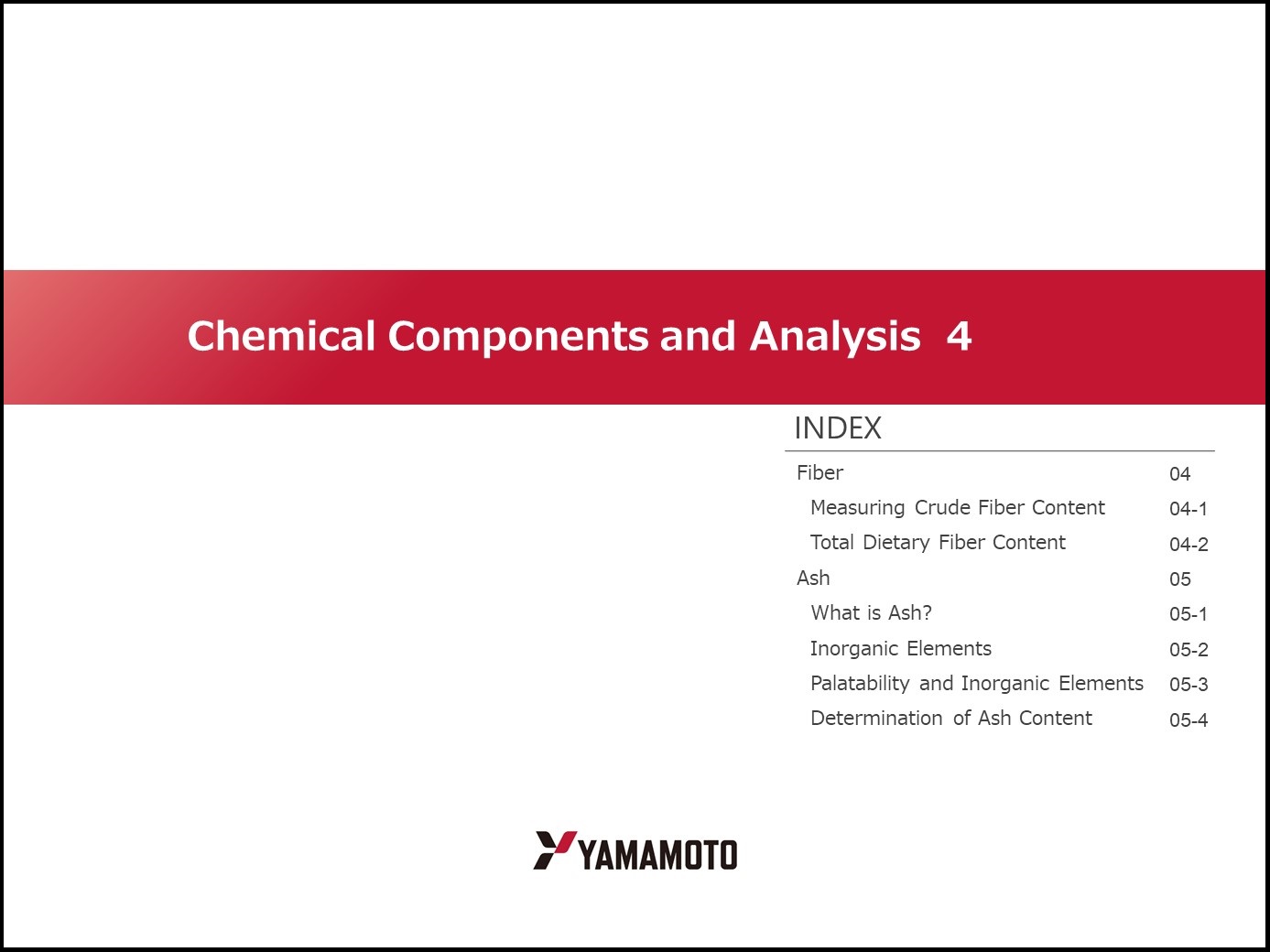61. Chemical Components and Analysis 4
- INDEX -
Fiber
Measuring Crude Fiber Content
Total Dietary Fiber Content
Ash
What is Ash?
Inorganic Elements
Palatability and Inorganic Elements
Determination of Ash Content
Fiber
The cell wall of rice is low in composites, but it is important from the standpoint of maintaining the organic structure. The cell wall of higher plants consists mainly of cellulose micro fiber and gel layer of matrix polysaccharides to fill gaps,
and is made of cellulose, hemicellulose, and pectin. A hemicellulose fraction, obtained with a weak alkali solution after extracting approximately 10% of pectin polysaccharide, is the main fraction, covering more than half of the polysaccharide of the cell wall, which mainly consists of arabinoxylan. Arabinoxylan, the main component, consists of β-1, 4-linked main chain of xylan branched with β-1, 3-linked arabinose residues. In addition, 20~30% of cellulose construction, cell wall glycoprotein, and lignin are known to be contained.
In the United States of America, products such as breakfast cereals or bran-added breads with enhanced dietary fiber, protein substances, and inorganic ingredients have been developed by adding deoiled bran (or white bran) stabilized by thermal processing. However, deoiled rice bran are mostly used for livestock feed.
Measuring Crude Fiber Content
The crude fiber content is obtained by dividing the lost weight of the ashed residue (dry matter) removed from acid or alkali soluble ingredients by dissolution, by the total weight of the sample.
1) Breaking the sample: First, the sample is powdered by a Wiley mill or
equivalent mill, and its moisture content is measured.
2) Measurement and removal of fat: Two grams of precisely measured sample powder
have fat removed by means of ether or petroleum ether.
3) Acid resolution of the sample: Put the fat-free sample into the 600ml
capacity beaker, add 2g of inorganic fiber (control) and 200ml of hot
sulfuric acid (1.25%) (Add an antiforming agent or boiling stone if
necessary), and boil 20 minutes on a hot plate.
4) Filtering: Filter the sample through a filtering bin connected with either a
water pump or an aspirator and through a Buchner funnel, followed by four
cycles of washing using 50ml of hot water.
5) Alkali resolution: Recover the extracted residue, filtered and washed, in the
beaker, add 200ml of sodium hydroxide (1.25%) and boil it for 30 minutes.
6) Washing and dehydration: Filter the contents using the same procedures as 4),
wash once with 25ml of 1.25% sulfuric acid, three times with 50ml of hot
water, and finally wash and dehydrate with 25ml of methyl alcohol.
7) Drying and measuring: Filter paper and extraction residue are dried for two
hours at 130℃±2℃, left in a desiccator to cool to room temperature and
weighed precisely (W1g).
8) Cindering and measuring: Burn to ashes for 30 minutes at 600℃±15℃, leave
in a desiccator to cool to room temperature, and weigh precisely (W2g).
9) Calculation: Crude fiber content = (W1 ? W2 ? lost weight of inorganic fiber)
x 100 / Sample weight. The lost weight of inorganic fiber in the equation is
the loss during the process 3), which was determined in a preliminary
experiment.
